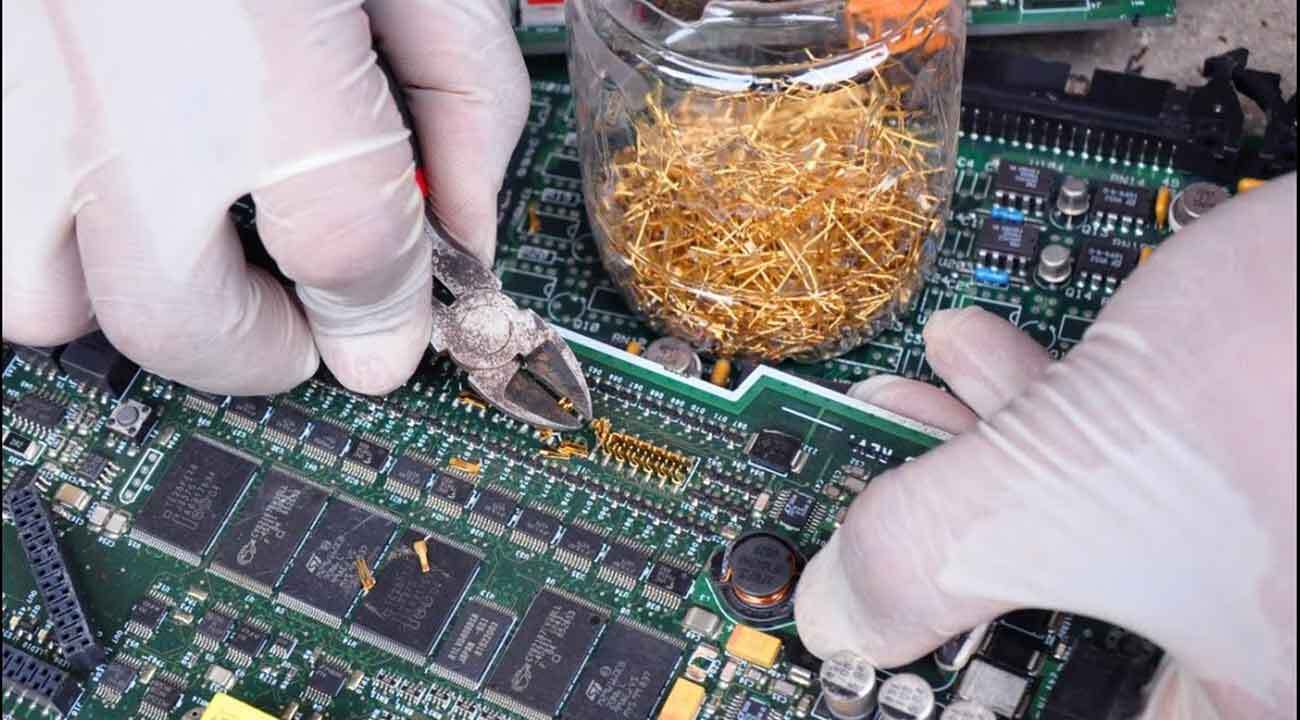To the present day, one of the most valuable and expensive noble metals in the world is gold. The value of gold never decreased, rather it is increasing day by day. This metal can be collected during the recycling process and be utilized in the manufacture of appliances and electrical gadgets.
Noble metals used in electronics are recycled and utilized in a variety of ways. Gold can be extracted from CPUs, gold-plated objects, and even clothing irons. However, the extraction process of gold is rather rigorous and dangerous for health.
Why is Gold Used in Electronics?
For many years, gold has been crucial to the electronics industry. Unlike other highly conductive metals like copper and silver, it does not corrode or tarnish. Additionally, it is a flexible, malleable substance that is easily pulled out into thin wires. Due to its unique physical characteristics, gold is the best material for a variety of electrical applications.
How is Gold Used in Electronics?
Gold is mostly employed in electronics in the form of sputter targets, gold bonding wire, and electroplating chemicals. The quantity used in hybrid inks and solders are smaller. Electroplating connectors and contacts with gold is the main application for metal in electronics. Within semiconductor packages, gold bonding wires are the next step because gold provides high electrical conductivity and corrosion resistance required for excellent performance. Other applications include hybrid circuits, solderable components, coatings for printed circuit boards, gold-based solders, metal layers for conductor tracks, and contact pads on semiconductors.
What is Gold Solder and How is It Used in Electronics?
Silicon chips that generate a lot of heat, such as those found in power amplifiers, must dissipate this heat to avoid damage. A reliable thermally conductive channel is often required for any device that generates more than 5 watts in order to dissipate the heat and prevent overheating. This is accomplished by employing a solder alloy to attach the chip to the package. The two main options are gold alloys and tin/lead solders. Eutectic tin/lead is ductile and makes strong connections, but it should not be used if the component leads are bonded with regular solder to a PCB or other components. Use of high-lead content with high-melting point solders can result in porous, void-filled connections, which can cause strains and hotspots in the joint.
Is Gold Still Used in Electronics?
Yes, gold is still used in electronics mainly in the form of electroplating chemicals, gold bonding wire, and sputter targets. Smaller quantities are used in hybrid inks and solders. The largest use of gold in electronics is as an electroplated coating on connectors and contacts.
What Electronics Contain the Most Gold?
Among all home devices, computers and televisions typically contain the most gold. Gold is also found in the circuit boards of earlier generations of cameras, radios, and media players. Traces of gold can be found in other electronics like game consoles, tablets, and phones. The highest gold-containing electronics are listed here, along with some tips for recovering gold for scrap.
Desktop Computer
It’s not difficult to determine whether a large number of outdated desktop or laptop computers you have on hand contain gold. Open them up, peer inside, and you will find many electrical components that have gold. It sounds simple enough: just take out some of the shiny components, ship them to authorized gold refiners, and wait to get paid.
- The largest circuit board in both laptops and desktops, the motherboard, is the part where the most gold can be found. Their edges have gold contacts. Additionally, motherboard surfaces also have tiny coatings of gold on them.
- Many computers have been fitted with these tiny circuit boards, which are roughly the size of a packet of sauce, to make room for the RAM. They typically have a few pins that are gold-plated and a tiny bit of gold on their surfaces.
- The huge square microchip-like components that are plugged into motherboards are called central processors. If you have enough of these laying around, they can be worth a good amount of money because they contain hundreds of gold-plated pins all around them.
Cameras
Many camera technologies, including auto-focusing, automatic exposure settings, motorized film progressing and looping, constructed flashes and sensors, and many others, were included in the last generations of film cameras. On the circuit boards of each of those components, there were trace amounts of gold and silver. A certified precious metals refinery is able to recycle the gold and silver found in these vintage film cameras. However, even the biggest digital cameras are most likely to only have a few dollars’ worth of recyclable precious metals.
Flat TV
Given that many devices are now either sealed with gold or have them dipped in it, you might be wondering about how much gold is there in a flat-screen TV. Only about 20 cents’ worth of usable gold can be found in a flat-screen TV. Some sets include up to 60 cents’ worth of noble metals, therefore recovering gold is only financially feasible for those who want to establish a large-scale firm to do it. Scraping machines are efficiently used in industrial operations to recover tons of scrap per hour. Though computers have distinct circuit boards, flat-screen TVs and computer monitors do share some features.
Ending Thoughts
Gold is a very precious metal with immense value and versatility for use. Even now, many electronic devices still use gold in its processors. Each of those parts carry gold to a certain amount. However, unless someone wants to build a full-fledged firm to do it, it is a lot of effort for the value of money one can get from scrapping gold from electronics.

Leave a Reply